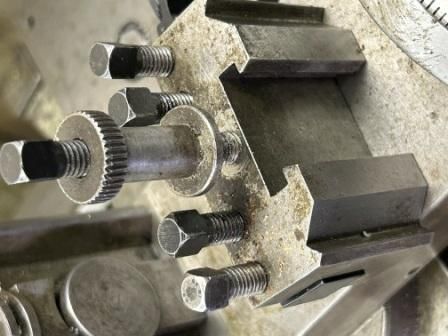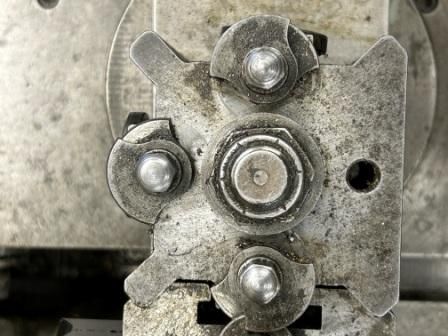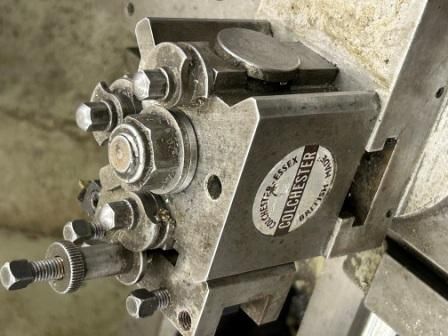Martin
Despite appearances the Dickson 2 see system is never over constrained. The system will always take up a properly spaced 3 point location, or rather 2 lines and maybe a point even if there are dimensional errors. The only constraint is that the Vees be parallel and of sufficiently similar angle to achieve line contact on at least one face. Which makes manufacture much easier as parallelism is easy to achieve in any competent jigging and set up for final grinding.
Really accurate depth setting, as needed with one V and a point so that the male and female Vees achieve full line contact on both sides, is not so easy. Tolerance on the point or flat height relative to the Vee is very small. Theoretically zero if the male and female Vees are exactly the same angle. Tightening the female angle a bit probably adds tolerance but reduces stability if taken too far. Had some optical mounts in the lab using a version of the single Vee and flat system. Using in an interferometer set up showed repeatability to be insufficient for the task.
If you analyse the Dickson setup it's clear that one side of one pair of male and female Vees produces the line contact needed for vertical and tilt stability. The minimum point contact needed for rotational stability could be anywhere on the other Vees and the system must work. In practice scuff marks show that any professional standard Dickson set gives line contact on two opposing sides of two Vees. I suspect that the female Vee angles may actually be a touch different to the male ones.
Tool tip positional variation depending on which side of the Vees do the guiding is immaterial out in the real world. It must clearly be very small
Interestingly scuff mark positions differ depending on who made the toolpost and holder. I have a Rapid Original post on one lathe and a real Dickson on the other with industrial quality tool holders from a variety of makers. I blued things up when I was having rigidity issues to see what was going on and it was quite clear that different holder / tool post pairings had different contact line positions.
Eventually I twigged that my rigidity issues were due to the thickness of the bottom collar on the height setting device varying between holder makes. If the collar is too thick it cannot properly enter the snail like slot below the hex of the locking device. So the locking force acts to bend the setting screw rather than pull the holder tightly agains the toolpost. It didn't help that several of my holders had acquired bent setting screws in a previous life. Testimony to the attempts of unthinking gorilliods to substitute brute force for careful examination and sorting of the problem.
Appropriate adjustment to collar thicknesses and new screws where needed sorted the problem. As I recall matters real Dickson collars are thinnest, Rapid maybe 15 thou thicker and the worst "unknown" make almost 40 thou thicker. By the time that one arrived and failed to fit anything I was aware of the problem so rectification was swift. The screw would have failed the EU cucumber specification!
One thing I've never understood about Dicksons is how they manage to accumulate fine swarf inside so quickly. Popping apart to clean is dead easy so its no great chore to do regularly but where does it all come from?
Clive
Edited By Clive Foster on 06/09/2023 10:08:57
Daggers.







